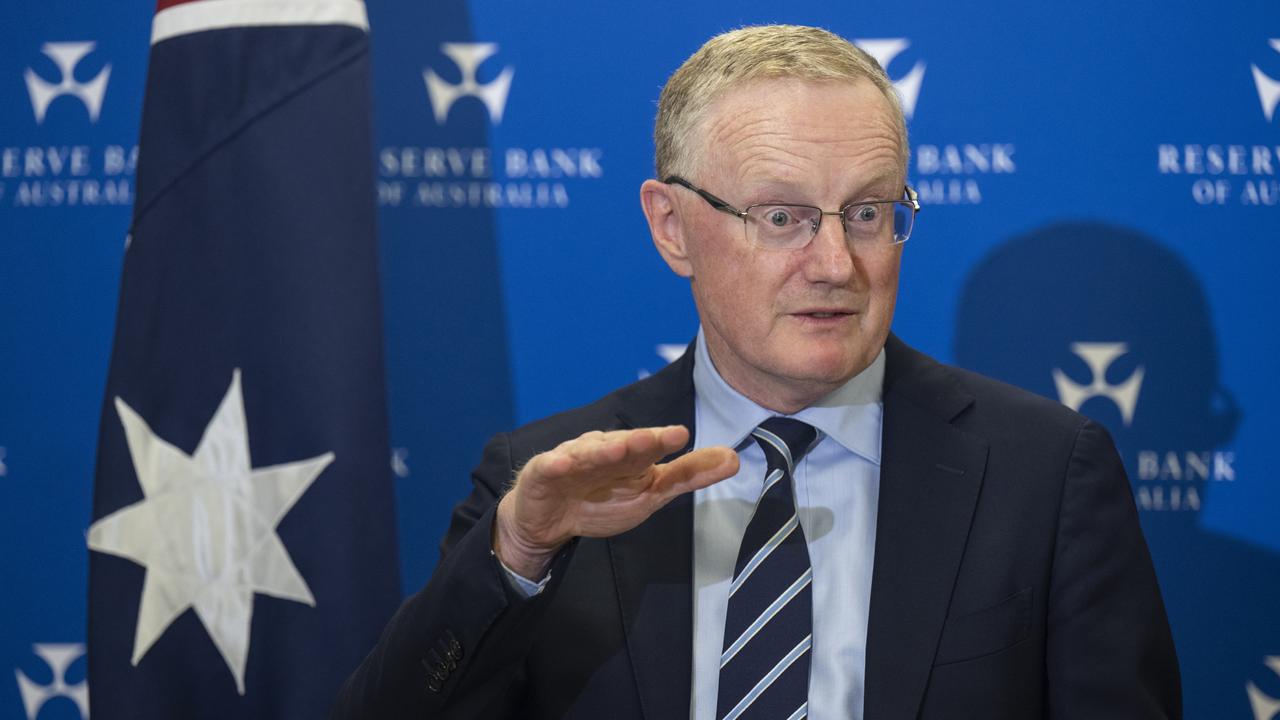Markets predict mortgage payments could rise by $12,000 a year
Interest rates are well and truly on the rise – and a graph shows a horror market prediction for homeowners over the next year.
Homeowners could be paying an extra $12,000 a year in mortgage payments if interest rates rise in line with market expectations.
Yesterday the Reserve Bank of Australia (RBA) announced a 0.5 percentage point increase to the cash rate, bringing it to 1.35 per cent. In total, interest rates have risen by 1.25 percentage points since May.
Ahead of the move, the Commonwealth Bank hiked its fixed rate by a whopping 1.40 percentage points, a figure that shocked analysts and revealed the bank expects interest rates to rise substantially.
The lowest fixed rate it now offers is 5.14 per cent for one year, up to 6.84 per cent for five years. It’s much higher than the 1.90 per cent some borrowers were able to get last year.
In response to this week’s rate hike, CommBank also increased its variable rate to 5.80 per cent.
Experts believe more pain is on the way, with the ASX 30 Day Interbank Cash Rate Futures predicting the cash rate could rise as high as 3.5 per cent by May next year.
However, many economists, including ANZ Capital chief economist Shane Oliver don’t believe rates hikes will go that far.
“If the cash rate went to 3.5 per cent, it would crash the property market and we would be in a deep recession,” he told news.com.au.
“For someone who has a $600,000 loan, their mortgage bill has already increased by around $420 a month, which is more than $5000 extra a year.
“If there is an increase of around 3 per cent to the cash rate, this would increase to around $12,000 a year.”
Mr Oliver said this means a recent homebuyer would have to fork out an extra $12,000 a year on interest payments compared to what they were paying earlier this year.
“If that were to occur, combined with the increase to the cost of living, I think it would push the economy into recession,” he said.
He noted the ASX 30 Day Interbank Cash Rate Futures figure was a market forecast for the official rate based on government bonds. Its interest rate prediction was actually even higher a month ago, and had already come down.
“Different people have different views – the money market has been more hawkish throughout the whole period and is more worried about inflation,” Mr Oliver said.
While Australians enjoyed historically low interest rates during the Covid pandemic, with the cash rate dropping to 0.10 per cent, the RBA has talked about “normalising monetary conditions” after a quicker than expected recovery, low unemployment and high inflation.
Mr Oliver said RBA governor Philip Lowe has been a “bit vague” about how high he wants to cash rate to go.

“The Reserve Bank has suggested that maybe it’s 2.5 per cent but that’s a bit of a guess and ultimately we won’t know until we get there,” he said.
The last time Australians experienced a cash rate as high as 2.5 per cent was in December 2014, more than seven years ago.
A 2 percentage point increase to the cash rate would see mortgage payments on a $600,000 loan rise by around $681 a month if passed on by the banks.
Mr Oliver believes the cash rate will likely reach 2.5 per cent by early next year.
“I think at the next meeting in August we will see another 0.5 percentage point hike [to 1.85 per cent], and another 0.25 [per cent] hike [to 2.1 per cent] by the end of the year,” he said.
“If we get a few 0.25 [per cent] hikes early next year, I think by early next year we’ll get to 2.5 per cent – the precise number might be 2.6 per cent.
“I think we’ll hit the peak around February or March, which is similar to the chart predictions for the money market but it’s just at a lower level.”
Ultimately, Mr Oliver believes the RBA will raise rates until it believes the economy is under control.
“The point is, in an economy that’s growing at around 4 per cent, which is what it has been, and with less than 4 per cent unemployment and inflation of 5 per cent and rising, an interest rate of 0 per cent is not normal,” he said.
Mr Oliver said the RBA would also be conscious of the hit to those who had signed on to fixed rate home loans in last year, when some banks were offering interest rates as low as 1.9 per cent.
“If at the end of 2020 you signed up for a loan at 1.9 per cent, if you were to rollover that loan today, you would be paying at least 5 per cent,” he said.
“Whatever you were paying in interest would suddenly be more than double and this is not just several hundred dollars on an annual basis, we are talking about thousands extra, and that’s going to hit from late this year to next year (when people’s fixed rate loans end).
“This is something the Reserve Bank will be conscious of.
“Around 40 per cent of existing loans are on fixed rates now, and will roll over to much higher rates, this will act as a real dampener on the economy, which again is why the RBA won’t need to raise rates as much as factored in by the futures market or money market.”






